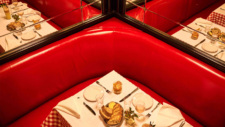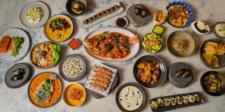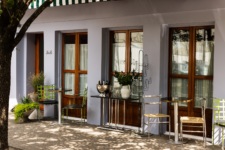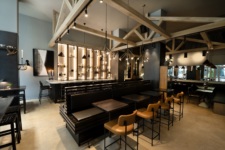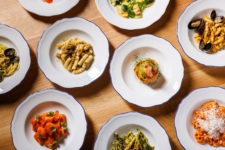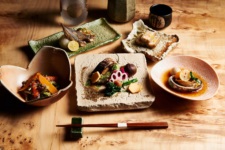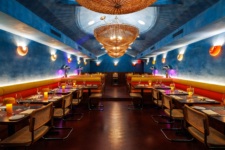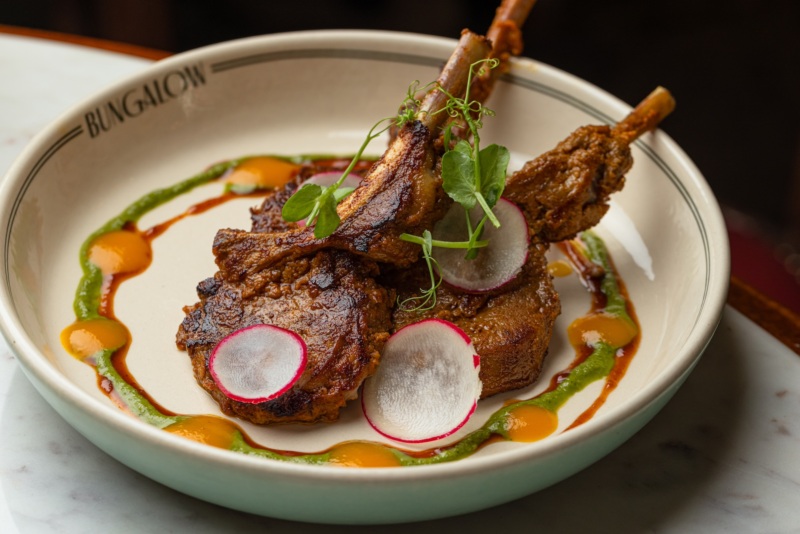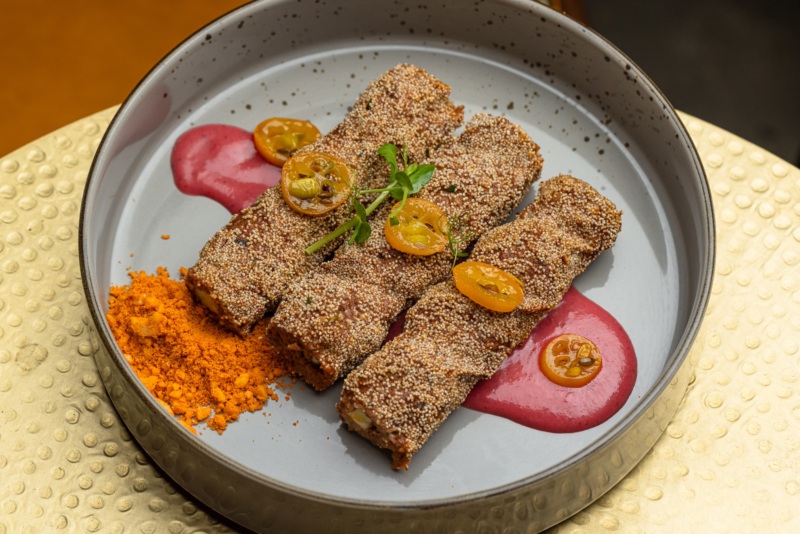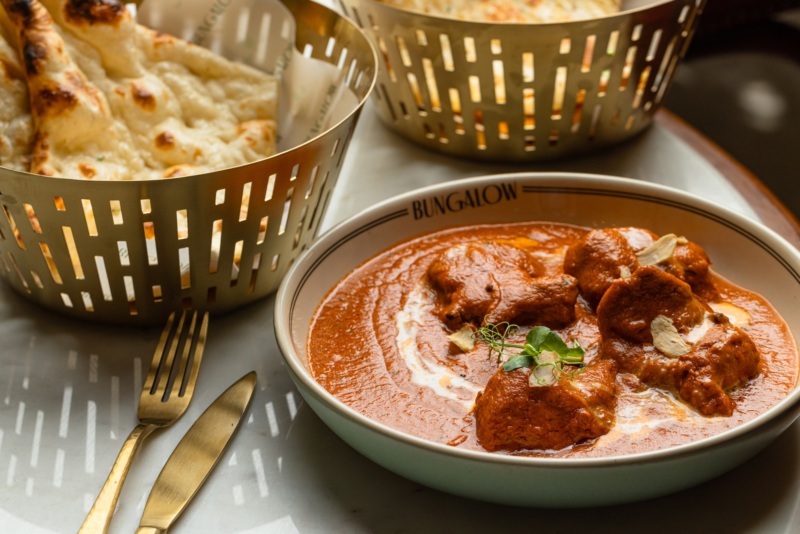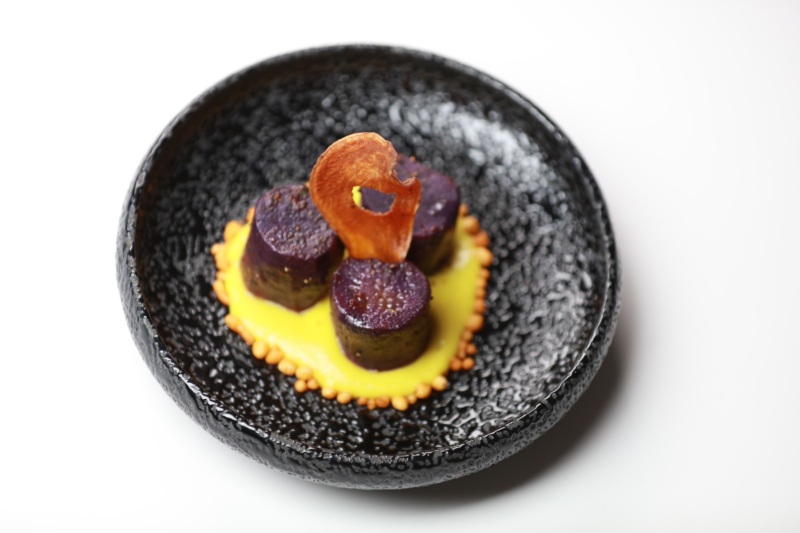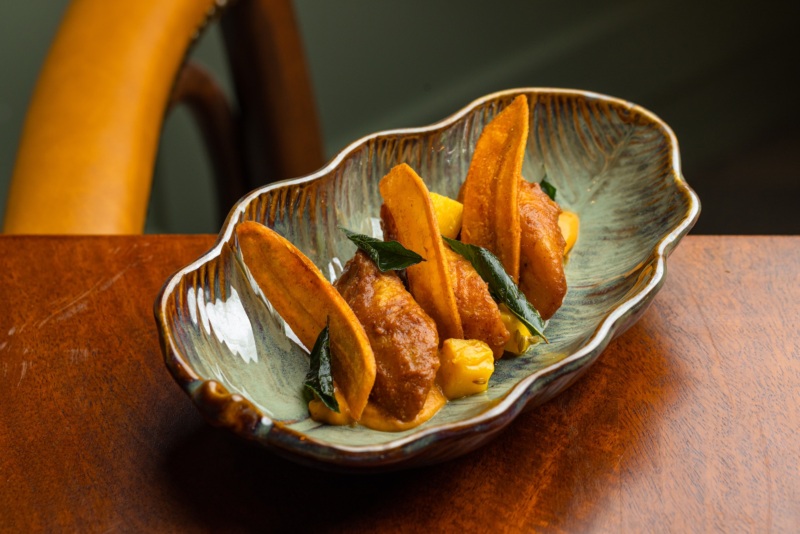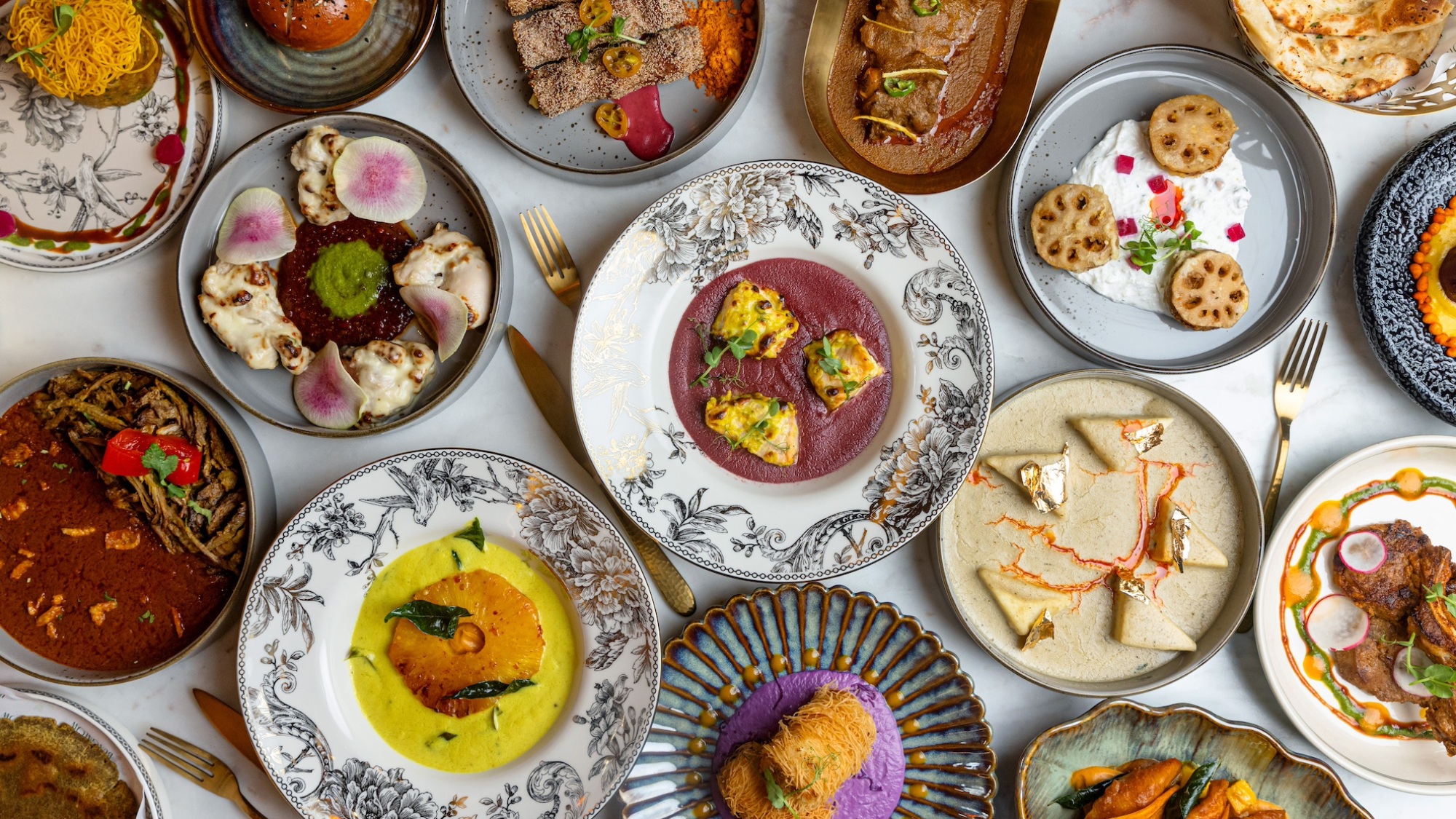
All About New York’s Bungalow, From Chef Vikas Khanna and the GupShup Team
Indian country club cuisine may not be very familiar to most New Yorkers. But it’ll soon get a major spotlight now that Bungalow, the newest restaurant from the GupShup team and acclaimed chef Vikas Khanna, is now open.
We sat down with Khanna and restaurateur Jimmy Rizvi (GupShup, Chote Miya, and Ammi) to find out everything you need to know about Bungalow before you go.
1. What’s in a name? Plenty.
“Bungalow” is an anglicization of the Indian word “bangla,” which refers to aristocratic lodgings. Appropriately, Bungalow takes inspiration from the members-only clubhouses built across India during the British Raj, such as the Delhi Gymkhana and the Bombay Radio Presidency Club, which served post-colonial nobility. “That name was also taken from us … in British dictionaries, bungalow came to mean mansions,” Khanna explains.
“As kids in India, we always wanted to go with our friends whose families had these [coveted] memberships,” Rizvi says. “We’d go for a swim and then have cucumber sandwiches by the pool, or we’d play tennis or snooker.” You won’t find a cucumber sandwich on the menu at Bungalow, though, because Bungalow represents Khanna and Rizvi’s desire to reclaim clubhouse cuisine.
“For the space, we looked to the nostalgia of these social clubs and other bungalows across India,” Rizvi says, “but we wanted a more elevated and modern menu that covers all the regions of India.” That said, Bungalow nods to club favorites such as aloo tuk, a favorite made from spicy fried potatoes, and a sweet potato chaat.
The restaurant’s name isn’t the only reference to Indian culture and history that you’ll find, either. The number “101” on the restaurant’s stationery not only acknowledges the address, but also happens to be an auspicious number in Indian culture. There are subtler invocations of Indian life, too, like housemade mouth fresheners (candied fennel seeds), and a nostalgic take on Indian chips.
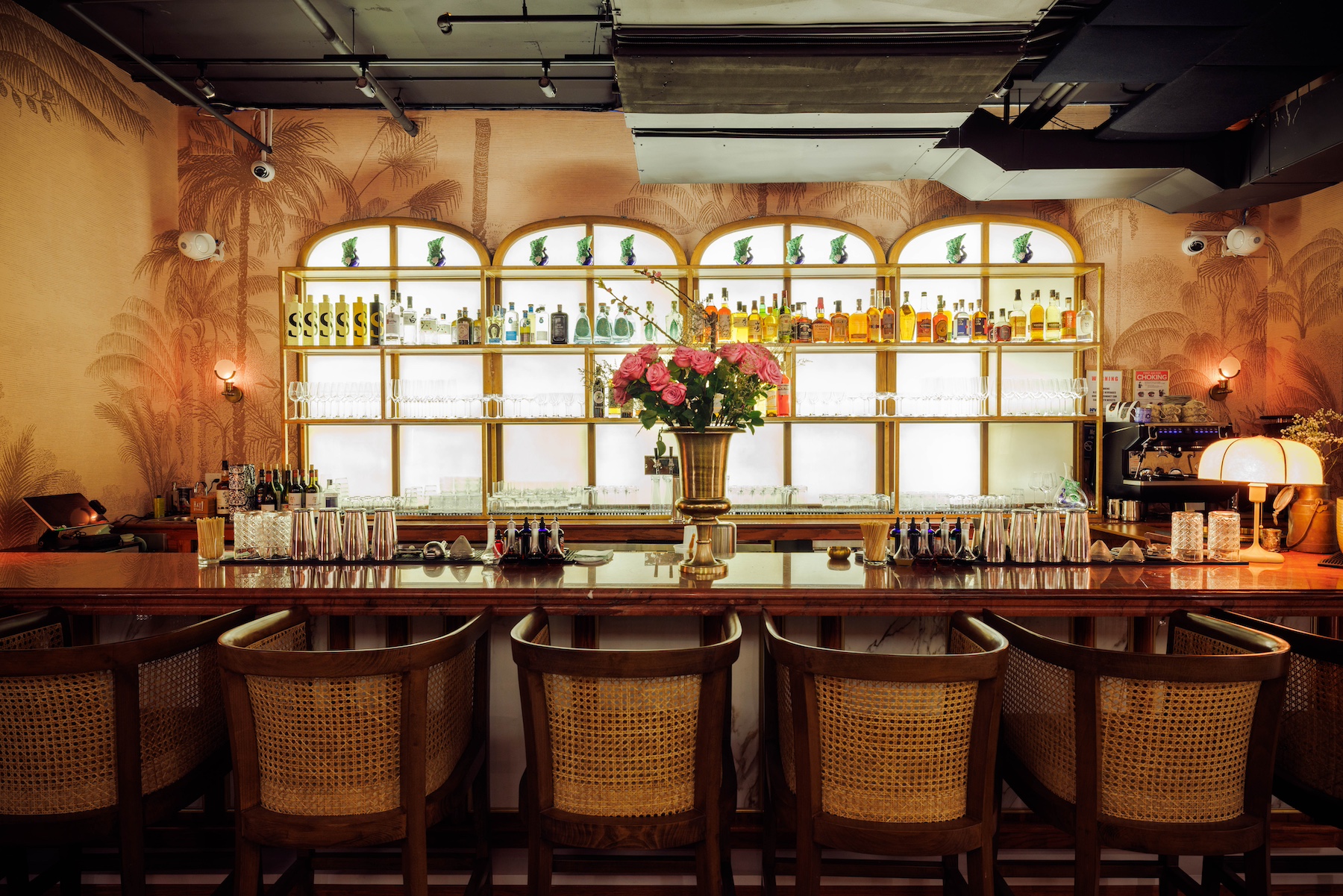
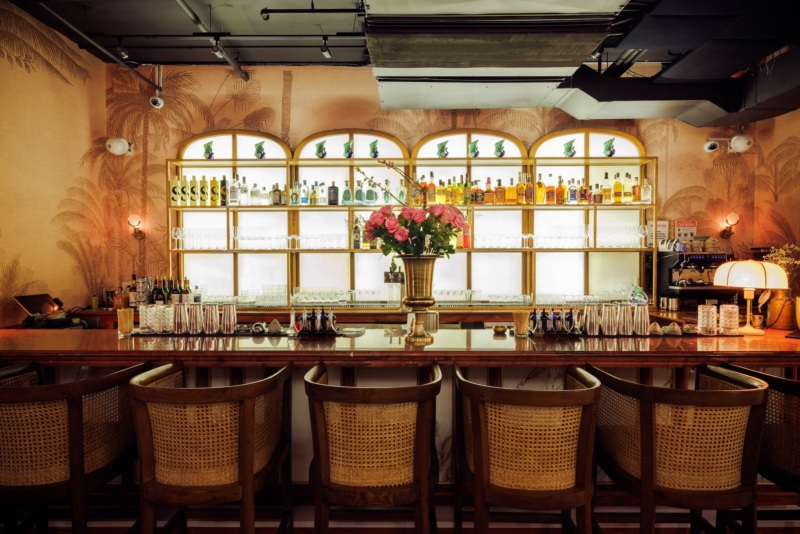
2. For Khanna, this is personal.
Vikas Khanna is no stranger to New York’s restaurant scene, having served as the former executive chef of Junoon when it was awarded a Michelin star in 2011. But Bungalow might be one of his most personal projects to date.
The restaurant began with a shared car ride to the set of “MasterChef India,” where Khanna is a host, when Rizvi pitched the idea to Khanna. Khanna says he knew Rizvi would be the right partner to work with, given his dedication to his staff and his restaurants, especially during the pandemic.
“I think this is going to be one of my last restaurants, if not my last restaurant,” says Khanna, who also owns Kinara, a modern Indian restaurant in Dubai. Still, he’s confident this flagship will be his “most heartfelt and most innovative restaurant yet.” He credits his sister Radhika, who passed away in 2022, for his success, and Bungalow opened its doors on March 23, on the same day as her birthday.
For Rizvi, too, Bungalow is a family affair; his sister, Shaila Rizvi, designed the interiors.
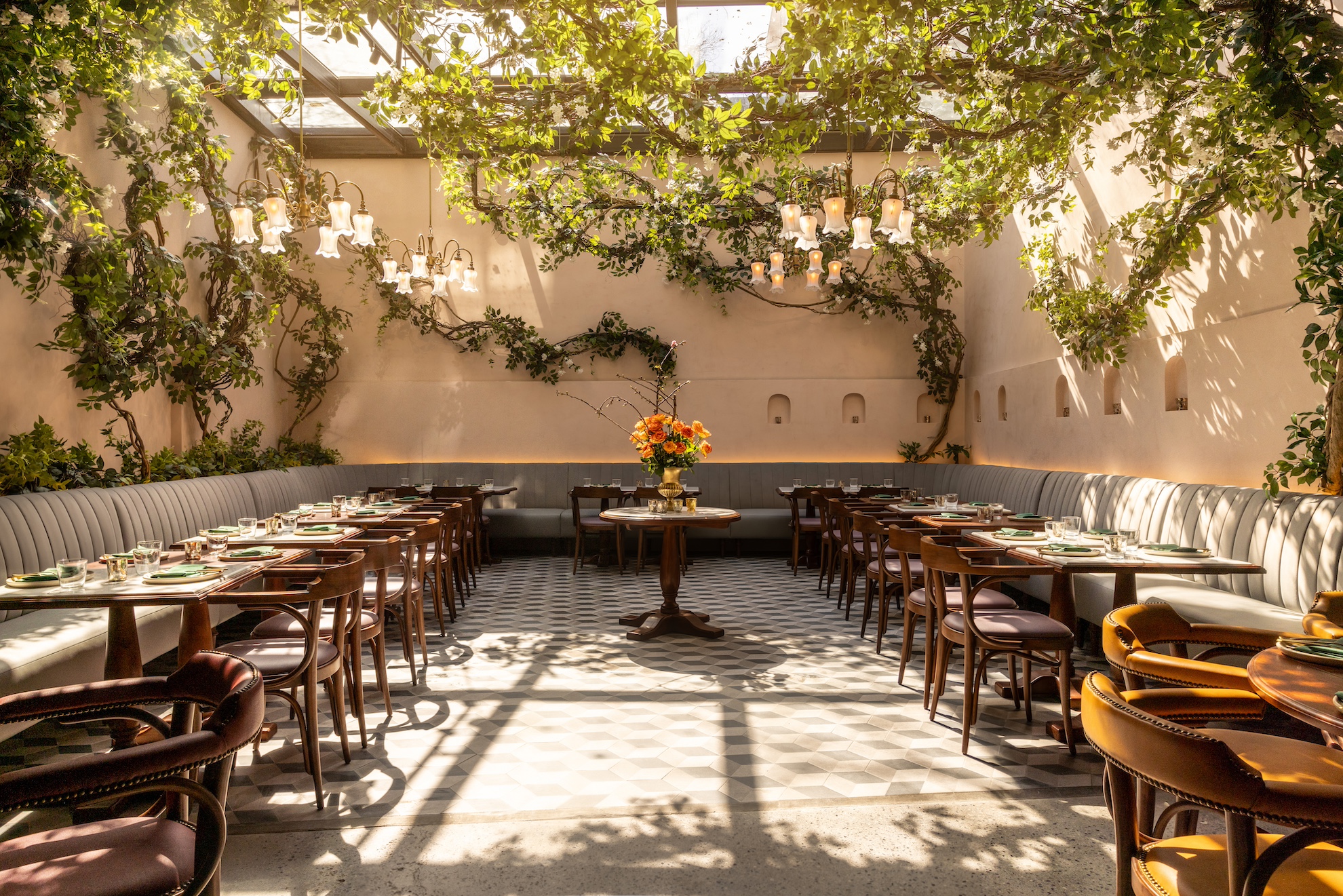
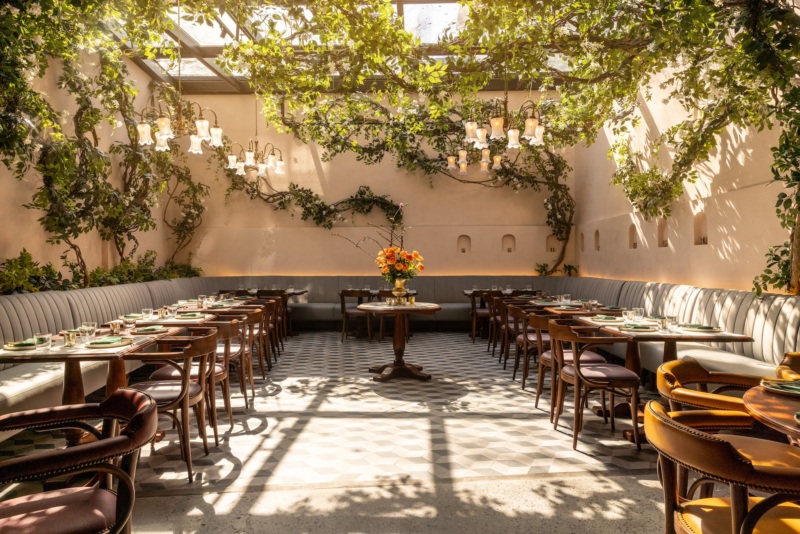
3. It’s in good company here in New York.
For decades, Indian restaurants in the U.S. have foregrounded the same few dishes from the northern state of Punjab. However, in recent years, New York, in particular, has welcomed a number of popular and critically acclaimed Indian restaurants, including Tamil-focused Semma, and the recently opened Kanyakumari, which focuses on food from India’s coast. With Bungalow, Rizvi and Khanna hope to add to the city’s rich Indian dining scene, and do things a bit differently, too.
“Everybody is already doing regional food,” Rizvi says. “It’s been taking off for a while. But we wanted the experience [at Bungalow] to feel like New York, too.”
While Bungalow references social clubs that served Victorian-era, British-influenced cuisine, its menu is much more decidedly Indian, featuring dishes that range from Kashmir in the north to Kerala down south.
“We’re a part of one large family,” Rizvi adds. “We’re looking to raise the bar, but we are not competing.”
4. Let’s talk about the food.
Bungalow’s relatively compact menu spans the breadth of India’s 28 states, looking to lesser-known cuisines and regions of India, much like Dhamaka does, and there are many thoughtful touches to be found throughout.
Khanna uses three marinades for the chicken tikka which he then slathers in Amul cheese, a childhood favorite, and there are a total of a six layers to the seekh kebab made with minced lamb, poppy seeds, and more Amul cheese. His purple sweet potato chaat gets studded with ancient ashwagandha pearls. Home-style lamb chops from Lucknow are pan-fried rather than grilled, just like Rizvi’s mother made. The Kiss of Kashmir features a vegetarian galouti kebab made from kidney beans, a Kashmiri staple, which are sandwiched between two slices of fried lotus root. There’s also sheermal, a sweet, buttery bread flecked with saffron.
Khanna also reinterprets ghee roast, a mainstay from Karnataka inspired by his time as a student in Kundapur, the town where the dish was created. Only he uses fried plantain instead of meat or shrimp, showered with fried curry leaves and plantain chips, which sit over a zingy banana ketchup made with the peel. “Have you ever seen anything in [an Indian home kitchen] go to waste?” Khanna laughs. “They’ll kill you!”
Diners can also expect chicken Chitranee, a gently spiced curry draped with shishito peppers that comes from the Baghdadi Jews of India. “India was [among] the first to embrace Jewish immigrants … this is the India we want to represent,” Khanna explains. “I don’t dictate how people should eat … you create the art, and you let people enjoy it.”
There’s also a chicken Amrit which Khanna claims is the predecessor to butter chicken, putting the butter chicken debate to rest. Other highlights include vinegar-laced shrimp balchão cones that hail from the former Portuguese colony of Goa; and tandoori salmon soured with kokum, a fruit from the mangosteen family.
“The recipe development had to be done with a lot of care and symmetry,” Khanna says. “We wanted our dishes to appeal to Indians, but also to the world.”


5. The cocktails are as thoughtful as the food.
A prime example? The clarified chai Old Fashioned, called the Chai Pani (tea water), which took two months to perfect. It calls for Old Monk rum rather than whiskey. “When you’re clarifying [a cocktail], you remove the dairy by extracting it,” says Naeem Lama Khan, the beverage director and a fellow GupShup transplant, who anticipates seeing at least one Chai Pani on every table. “But when you’re drinking chai, you want the dairy. We wanted to create that thick mouthfeel of chai. You won’t find a recipe for this on Google. I’m really excited that we’ve cracked the code.”
Another highlight is the Holi Moli, an ode to the Hindu festival of color, which is a spicy mezcal margarita with a generous jigger of Agua Mágica served in a cordial glass. Lama Khan dots the drink with Kashmiri chile oil and Thandai spice mix, the latter being an essential ingredient of Holi celebrations. But there’s another twist: This margarita isn’t on the rocks. “We wanted to make it a little more elegant, a little more sexy,” he says.
For something less potent but equally delicious, he recommends the Coco the Elephant, a Ten to One white rum-and-coconut-water-based cocktail that’s served with smeared coconut cream and dried mint on the glass. The cocktail gets its name from Coco the Elephant, a character from one of the paintings featured in the restaurant.
The bar menu also includes extensive tequila, mezcal, and whiskey lists with an impressive selection of Indian single malts such as Amrut and Rampur.
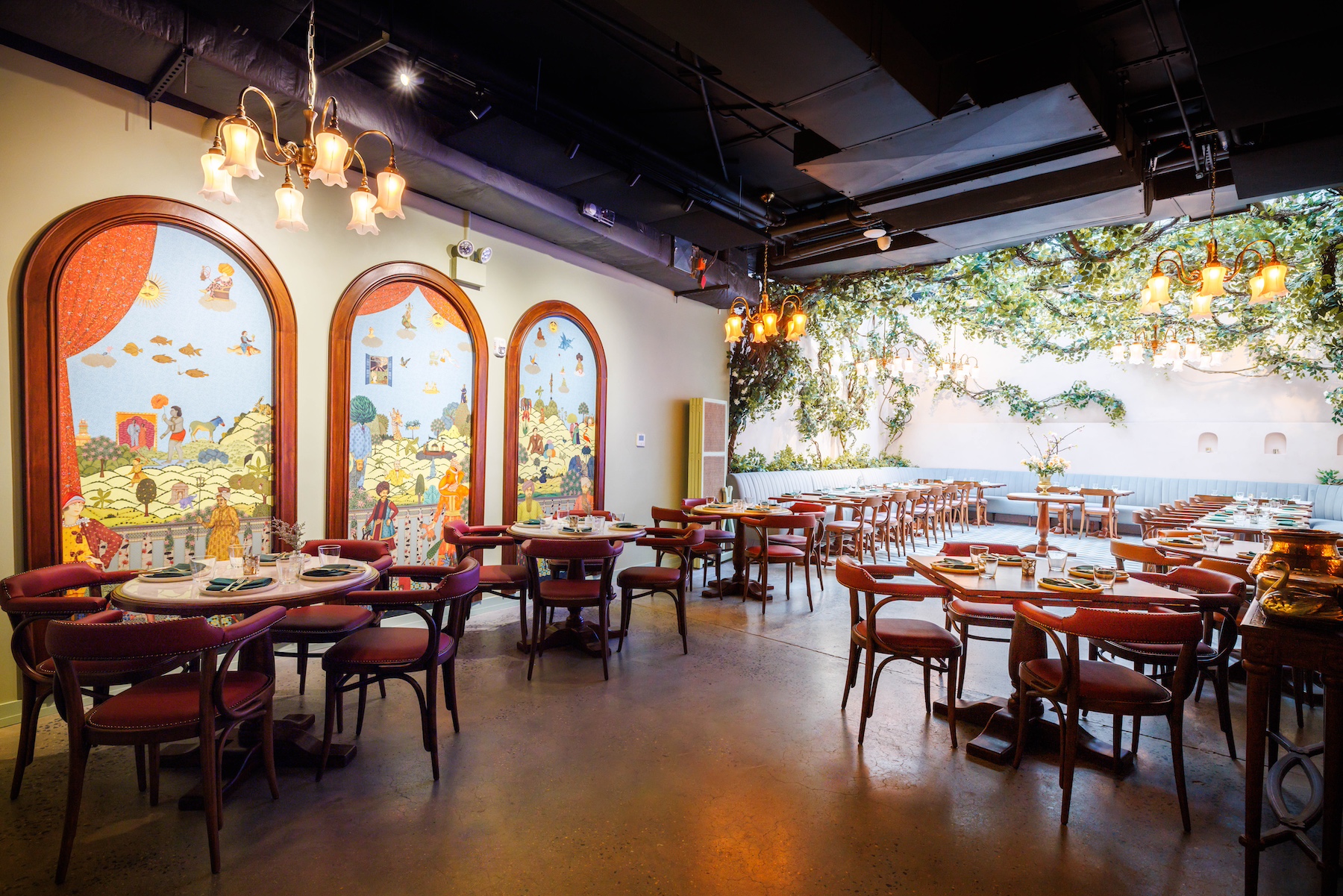

6. The setting is stunning.
It’s easy to miss 101 East First Avenue since it’s tucked between a funeral home and a pizzeria — very New York, Rizvi points out — so he and Khanna wanted to make sure you see it: An emerald façade leads you to a descending staircase that’s been fashioned to resemble the stairs at the Golden Temple, Sikhism’s holiest site.
Inside, the relatively large space accommodates up to 100 for dinner and 25 at the bar. And it’s split into three different sections: a lounge, bar, and main dining room.
The doors open to a lounge redolent of a clubhouse library, complete with a custom-made chandelier and paintings of sepoys guarding bungalows and another of groomsmen wearing blush pink paghs, or turbans. The furniture in the library is made with rattan from India, including a bookshelf filled with Indian cookbooks, crowned by a framed photo of Khanna’s sister.
Shaila Rizvi, the interior designer, says attention to detail and accuracy was key: four containers of material from India, Korea, and all over the States were shipped over, carrying everything from cutlery to a custom mold to pierce designs onto sheermal.
The bar features arched windows and decor evocative of a gentleman’s club, while the booths next to the bar make you feel like you’re sitting in a garden, thanks to the Georgian-era paisley-printed wallpaper.
In the main dining room, antique brass cookware from a museum in Manipal hangs above the semi-open kitchen, and you’ll also find original artwork by Alexander Gorlizki. The skylight dining area, in particular, is decked with foliage, making it ideal for private events and large parties.


7. Expect more, from chef collabs to a book club.
Khanna and Rizvi are toying with the idea of opening up their kitchen to the greats of Indian cooking through an upcoming chef series. One chef, in particular, is high on Khanna’s list: Vineet Bhatia, the first Indian chef to win a Michelin star. “He became my voice when he got the Michelin in London,” Khanna says. “The first to win is always going to get battered because you’re convincing so many inspectors and chefs and collaborators to write recommendations for critics, and to convince them that this is at par with French cooking.”
The duo also plans to launch a Bungalow Book Club for cookbook launches and readings. Khanna points to Bungalow’s bookshelf in the lounge, which holds a wealth of books from the likes of Madhur Jaffrey, Kunal Kapoor, and Khanna himself. “Every time we put someone’s work in there, it does something amazing. It’s ceremonious,” he says.
“If we are going to have a global domination of Indian food, we need to have a big tribe,” he adds.
Bungalow is open nightly from 5 to 11 p.m.
Mehr Singh is a New York-based food writer with bylines in Bon Appétit, Eater, and Food52. Follow her on Instagram. Follow Resy, too.
Discover More

Stephen Satterfield's Corner Table



